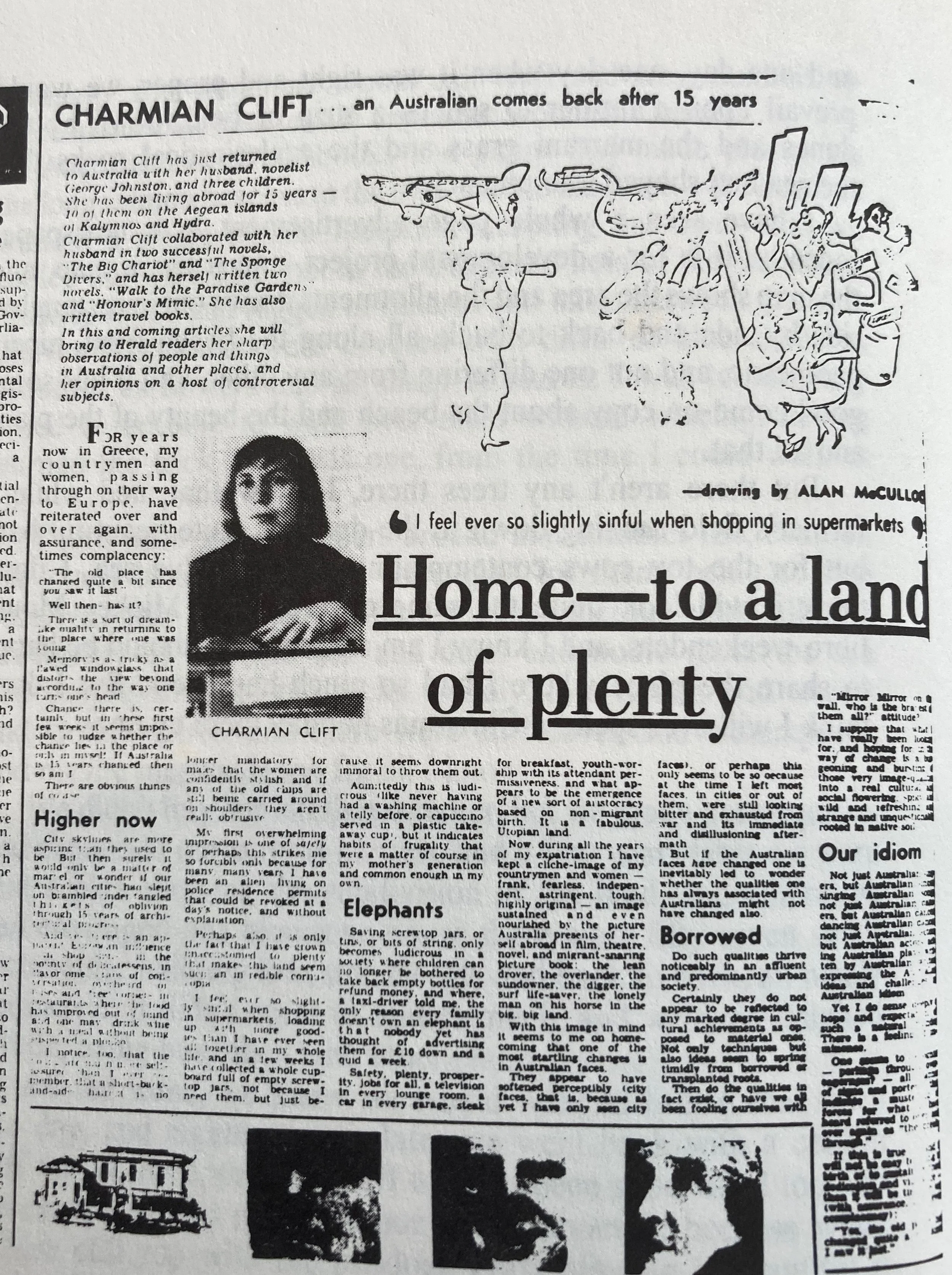Images in Aspic
When Charmian Clift arrived in Australia in August 1964, she felt herself to be ‘an odd sort of migrant’. After thirteen years away — ten of them spent on a Greek island — she barely recognized the place and the people. And yet, unlike the other women on the Greek migrant ship on which she had travelled, she was ‘migrating to home’.
On learning that Clift was back in the country, a former colleague, now an editor at the Melbourne Herald, invited her to write 'some regular pieces' for his newspaper. As George Johnston recalled: He was not at all sure what these pieces were to be... sort of essays, he thought... anything she liked. He explained that he was not looking for a woman journalist, but a writer. The daily press needed some writing, real writing, from a woman's point of view.
For Charmian Clift, this invitation was a job description made in heaven. The genre of the essay — with its first-person voice, its discursiveness, and its idiosyncratic point of view — was exactly the type of writing she had employed in her two island memoirs, where she had described Greek society from the viewpoint of a woman. Now she was going to describe the society of her home country from the point of view of someone who was (as she put it) ‘both native-born and half alien’.
On 6 November 1964 Clift’s first essay — appropriately titled 'Coming Home' — was published in the Melbourne Herald. A couple of weeks later, this same piece appeared in the Sydney Morning Herald. Over the coming months, Clift's column became a regular weekly feature of both publications, and the columnist rapidly developed a devoted readership in both cities.
In the third of her published pieces, titled ‘Second Class Citizens’, Clift directly addressed her constituency — women. ‘I am one too’, she began. And added: ‘The battle is on.’ Although there were a great many men among her devoted followers, the core Clift readership was comprised of the people whom she affectionately called her ‘Thursday ladies’. To them, the weekly Clift column was a chance to have a chat over the kitchen table with a likeminded woman — indeed, with a friend.
In 1965, Horwitz Publications (known for its list of popular and pulp fiction) brought out the first year’s ‘crop’ of thirty-six column pieces in book form. Sadly, the book was printed on cheap floury paper, the spine didn’t hold, and the cover photograph depicted the publishers’ idea of a lady columnist: wearing a fashionable hat at a rakish angle, the author can only see out of one eye.
It didn’t matter. The Thursday ladies and even their husbands treasured the shoddy little volume that brimmed with the author’s joy in the discovery of her homeland. all begins with an idea. Maybe you want to launch a business. Maybe you want to turn a hobby into something more. Or maybe you have a creative project to share with the world. Whatever it is, the way you tell your story online can make all the difference.
Photograph L: The first essay, as it appeared in the Melbourne Herald, 6 November 1964
Photograph R: Charmian and George, publicity shot taken in 1965 when Charmian was working on the television adaptation of George Johnston’s novel My Brother Jack.

